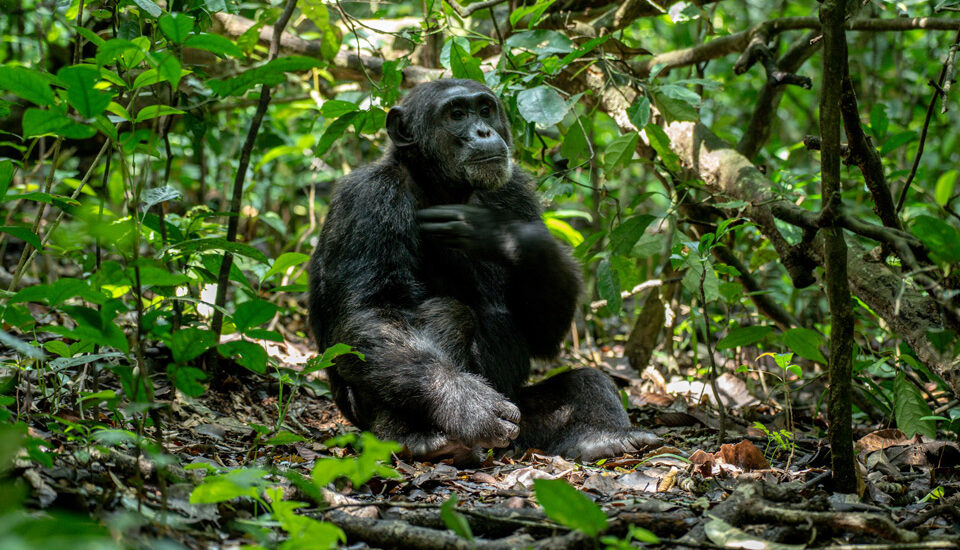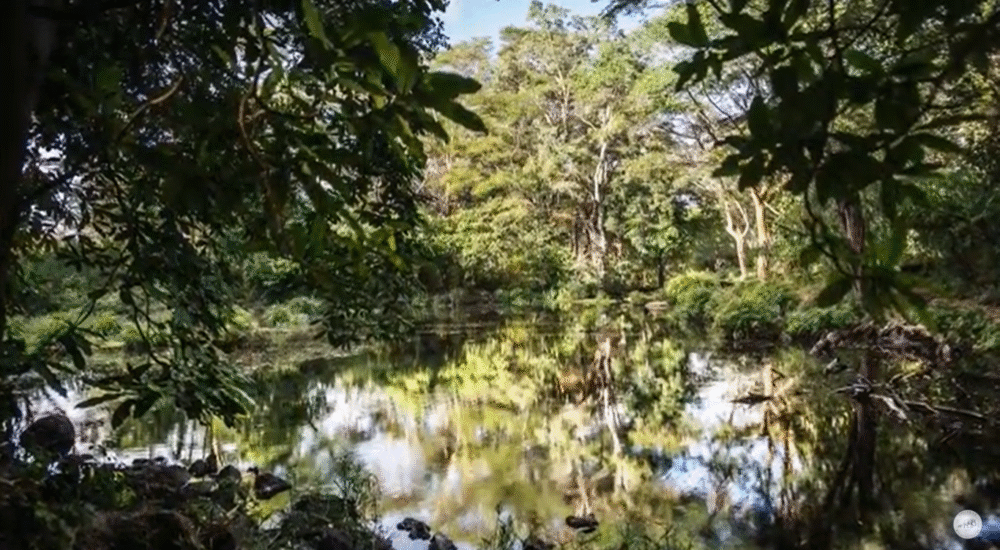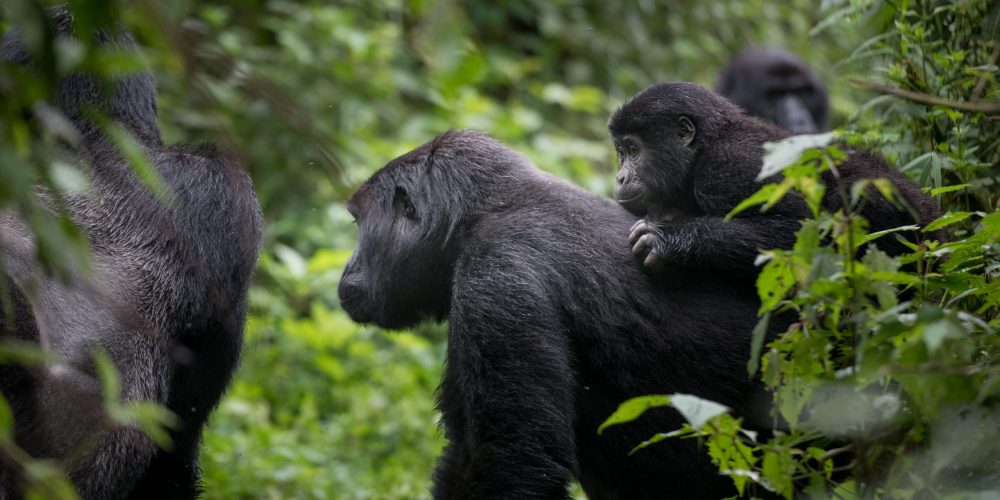If you're planning a chimpanzee trekking experience in Rwanda, one of the most important things…
Chimpanzee close Up at Entebbe UWEC Zoo
Chimpanzee close Up at Entebbe UWEC Zoo – Uganda Wildlife Education Centre.
Entebbe UWEC zoo: chimpanzee up close – Is the thought of meeting your closest relative face-to-face something you’ve ever entertained? Take part in the chimpanzee integration study, provided that you can provide proper health documentation. You will accompany a caretaker on a stroll around the island moat with the folks.
Be amazed as you watch these apes learn, adapt, and have fun while living in a forest-like setting with other chimpanzees. Helping newly rescued chimpanzees gain the trust and confidence of other chimpanzees, who may then become their lifelong friends, is the goal. Our caretakers perform the lengthy and constant process of integration according to plan. We are delighted to provide you this opportunity and accompany you for an hour in a safe setting.
Take the time to listen to the chimpanzee caretaker as they discuss the animals’ background, arrival at the center, habits, and difficulties. Be open to being touched and caressed by the babies, and do the same for them.
Chimpanzees are harsh and might prefer rough trickles. Learn the ins and outs of communicating with your relatives and how to read their body language with the aid of your guide.
Just picture it: a chimpanzee holding a bowl of porridge, a banana, and a call for more food! Take part in this one-of-a-kind, once-in-a-lifetime opportunity to learn all of this and more!
Fees: Please contribute $290 to ensure their maintenance and the rescue of those in the wild.
Time and Date: The event takes place every day at 7:30 in the morning. An introductory statement given by one of the caretakers will kick off the event.
Booking and Health: You are need to have a prior booking and health clearance. Regular checkups and updated immunizations are part of chimpanzee care. The goal here is to stop the spread of illness from person to person.
Go to Uganda’s Mabamba Swamp as well.
Birdwatchers and ecotourists go to Uganda’s Mabamba Swamp, a notable wetland birding destination, to see the Endangered Shoebill stork, the country’s most popular bird. Covering 2424 hectors, Mabamba Swamp is situated west of Entebbe on the northern bank of Lake Victoria and is characterized by dense marshes of papyrus, water lilies, and other grasses native to wetlands.
![]()
One of the Ramseur sites and an Important Bird Area (IBA) is the Mabamba marsh. There are more over 300 bird species found in the wetland, including some that are in danger of extinction. The wetland is also home to seven of Uganda’s twelve species that are confined to the Lake Victoria biome, including the Papyrus Gonolek, among many others. From October to March, the marsh also plays home to massive migratory flocks from the Palearctic.
Several paths go to Mabamba Swamp. The quickest way to go to Mabamba from Kampala or Entebbe is to start at the Nakiwogo landing site in Entebbe. From there, it’s a 10-minute ferry ride to the Kasanje landing. From there, it’s a 20-minute drive through open fields and cultivation, where you can see plenty of garden birds.
Using a motorized wooden boat, birdwatchers may navigate the network of pathways that cut across the dense marshes of Mabamba swamp.
Mabamba Swamp is home to a variety of fish, including the prized shoebill stork meal, which has a lengthy history among local fisherman. Still, among the most sought-after species by local fisherman is the lung fish. The fishermen’s long-held belief was that if they saw a Shoebill, also known as a “Bulwe” in the local dialect, it meant they would have a bad day’s fishing. To the fisherman, seeing a Shoebill before casting a line into the marsh was a terrible sign.
They almost drove Shoebills out of the marsh because of their hunting practices, which caused their population to plummet. In 2006, the Shoebill was partially protected when the marsh was designated as a Ramseur site. Still, the fishermen and locals gained insight while birdwatching on the marsh.
Some of the fisherman have formal education in birding and guiding, and they earn a living by renting out their boats to tourists who come to see birds. When fisherman notice a Shoebill on their way to fish, they are careful not to disturb it by getting too near, and they are happy to show visitors where to find the birds. In the Mabamba swamp, you could see as many as twelve Shoebills.
Shoebills in Mabamba marsh are most visible first thing in the morning, about 7 o’clock, before the fishing crowds arrive.
Different kinds of birds found in the Mabamba swamp
The African pigmy goose, fire finch, fish eagle, green pigeon, hoopoe, jacana, and marsh harrier are all birds found in Africa. Blue Swallow, Blue-cheeked Bee-eater, Black-winged Stilt, Black-headed Heron, Black-crowned Waxbill, Black-crowned Night Heron, Black-crowned Crake, and Black-headed Heron Common Squacco Heron, Crowned Hornbill, Double Toothed Barbet, Eastern Grey Plantain Eater, Brown Parrot, Cattle Egret, Common Bulbul, Common Moorhen, Common Sandpiper, Royal Parrot The glossy ibis, The following species are found in this area: Goliath Heron, Great Blue Turaco, Great Cormorant, Great White Egret, Great White Pelican, Green Cuckoo, Grey Heron, Grey Parrot, Grey Woodpecker, Grey-crowned Crane, Gull-billed Tern, Hadada Ibis.
Maximize your experience at Mabamba Swamp
You may visit this swamp at any time of year, but the dry months are ideal for feeding since the water is lower, the grass is shorter, and there are better spots to do it. From June to September and from December to February, this is held.
The Mabamba swamp tour: what to bring?
Because the canoe is open-air, tourists venturing into the swamp should pack accordingly: sunblock, rain gear, a shelter, water to drink, a rain cover for their cameras, and spare batteries for their spears. To arrange a boat excursion to the Mabamba marsh in Uganda in search of the shoebill stork, get in touch with Monumental Expeditions and Safaris. To reserve an up-close encounter with chimpanzees in the Entebbe UWEC Zoo, call Monumental Expeditions and Safaris.


